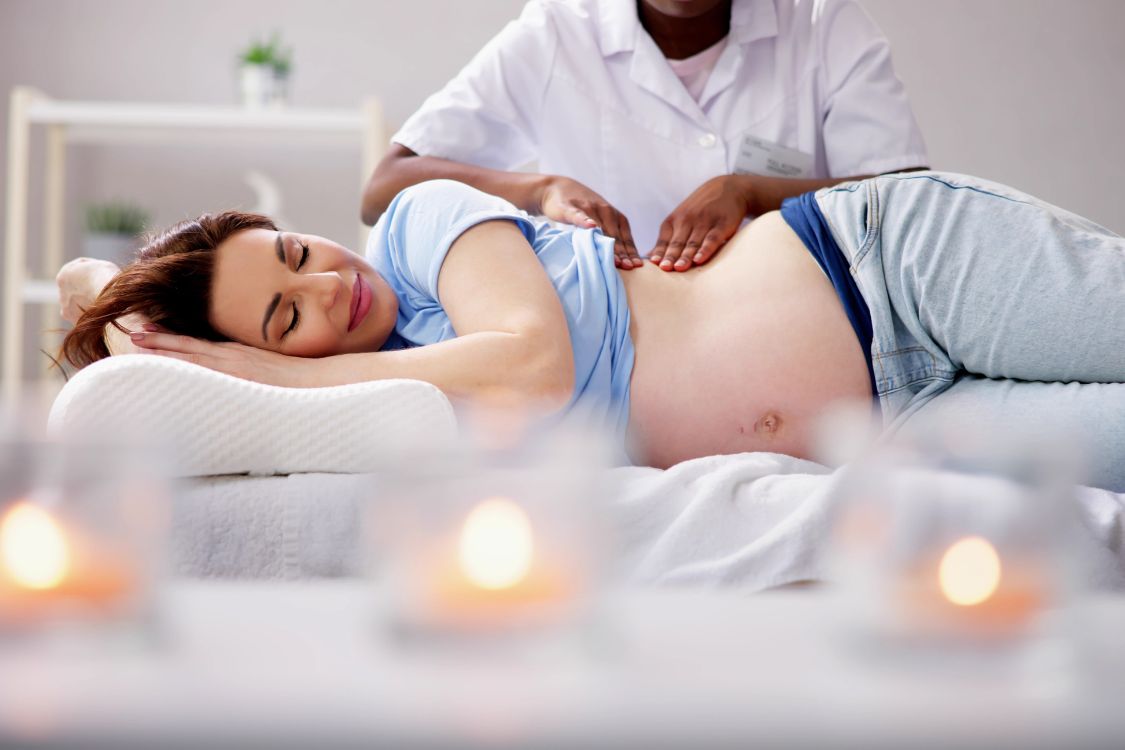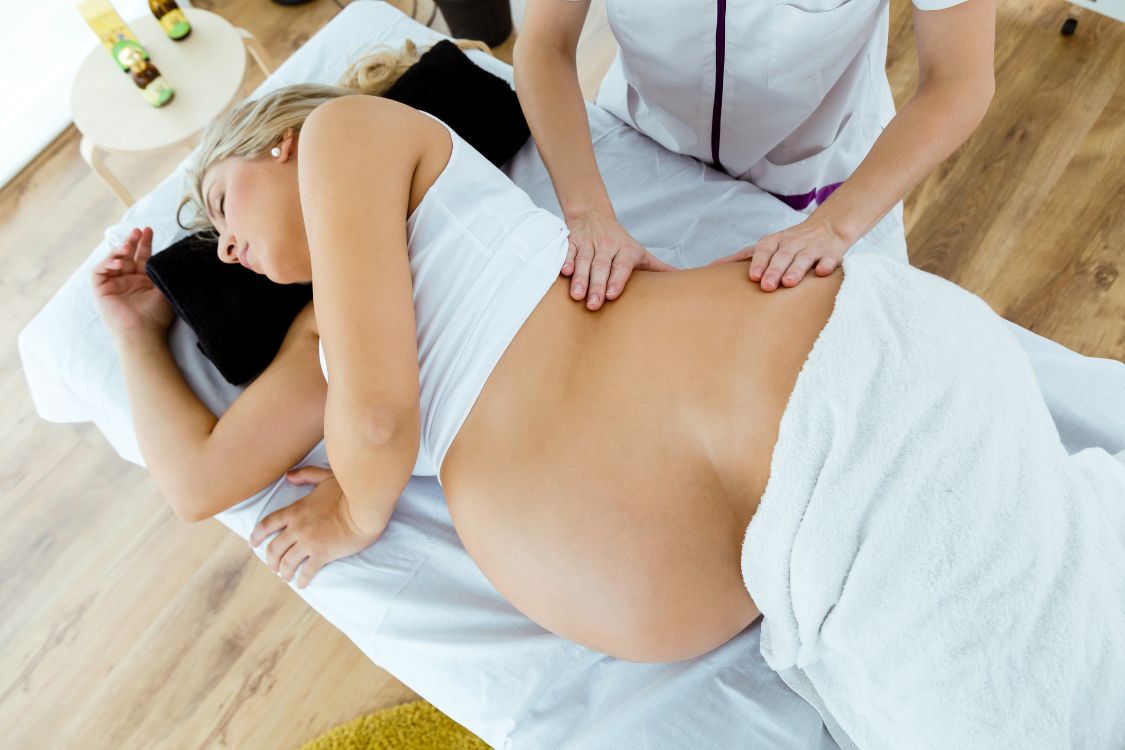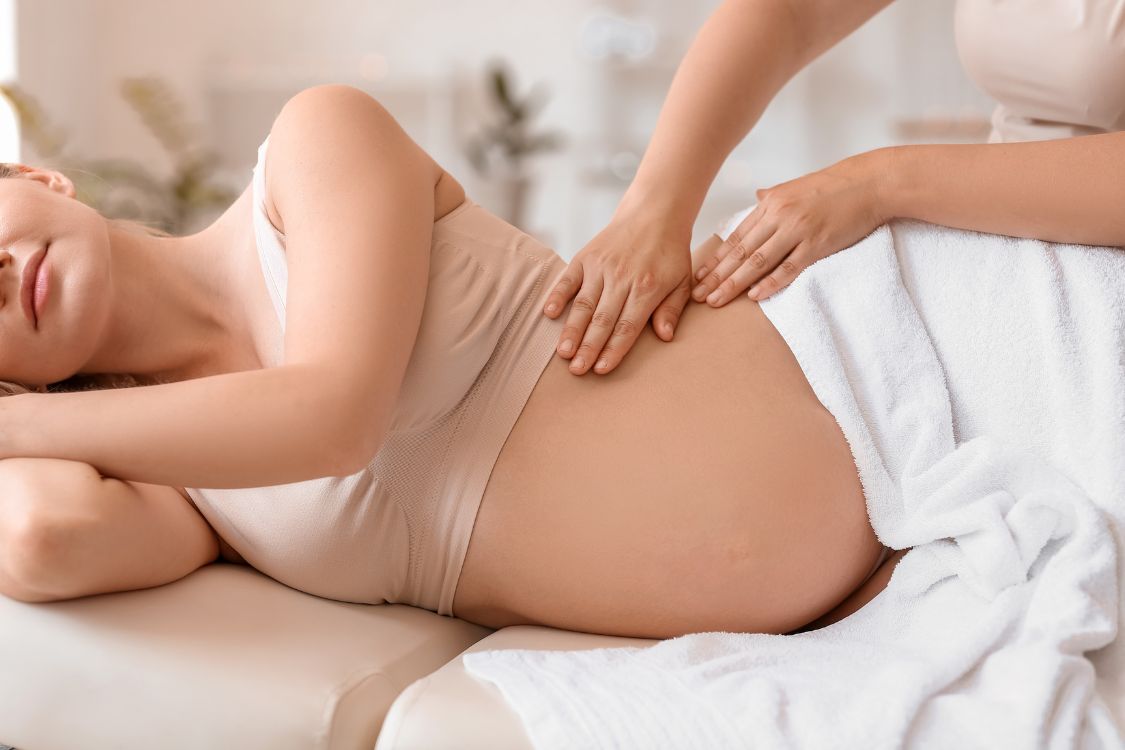Expectant mothers often face numerous physical challenges, leading to discomfort and stress. Is there a way to provide relief and support during this transformative time? Pregnancy massage offers a gentle and soothing solution, tailored to accommodate the unique needs of pregnant women. It not only alleviates common aches and pains but also fosters relaxation and well-being. This article will explore the calming benefits of pregnancy massage, highlighting its techniques, benefits, and safety measures, providing valuable insights for those seeking comfort and care during pregnancy.
Understanding Pregnancy Massage
Pregnancy massage is a specialised form of massage tailored for expectant mothers. Its primary purpose is to provide relief from the typical aches and pains associated with pregnancy, promote relaxation, and help prepare the body for labour. This massage type is gentle and soothing, focusing on the unique physical and emotional needs of pregnant women. By addressing discomfort such as muscle cramps and tension, pregnancy massage can greatly enhance an expectant mother’s well-being.
- Eases muscle tension
- Alleviates back and joint pain
- Promotes relaxation and well-being
- Enhances circulation
- Prepares the body for labour
Techniques used in pregnancy massage, particularly in pregnancy massage Glasgow, are adapted from traditional methods to ensure both safety and effectiveness.These adaptations are crucial, as they accommodate the changing body of the pregnant woman, ensuring comfort without compromising safety. For example, the pressure applied during the massage is carefully adjusted to avoid any potential harm to the mother and the developing foetus. Additionally, specific positioning, such as using cushions, helps maintain comfort and reduce strain during the session. These careful modifications allow pregnant women to enjoy the benefits of massage while ensuring their safety and that of their unborn child.
Benefits of Prenatal Massage for Expectant Mothers
Prenatal massage offers a multitude of benefits that contribute to the overall well-being of expectant mothers. One of the primary advantages is its ability to significantly reduce stress and depression, which are common concerns during pregnancy. The soothing techniques employed in these massages also promote better sleep, which is essential for maintaining energy and emotional balance. By fostering relaxation and reducing anxiety, prenatal massage can help mothers-to-be navigate the emotional fluctuations that often accompany pregnancy.
In addition to emotional benefits, prenatal massage provides tangible physical relief. Pregnant women frequently experience lower back pain and shoulder discomfort due to postural changes and increased weight. Massage can ease these pains, offering relief through gentle manipulation of the affected areas. Moreover, it can alleviate the swelling of limbs, a common issue as the pregnancy progresses, by aiding in lymphatic drainage. This process helps to remove excess fluids and toxins from the body, reducing swelling and improving comfort.
Beyond addressing stress and physical discomfort, prenatal massage contributes to other health benefits. It can enhance the immune response, helping expectant mothers fend off illnesses more effectively. Improved circulation is another benefit, promoting the delivery of oxygen and nutrients to both the mother and the developing foetus. These massages can also improve overall health by supporting the body’s natural functions, ultimately contributing to a healthier pregnancy experience.
| Benefit | Description |
| Stress Reduction | Lowers anxiety and depression, promoting emotional well-being. |
| Improved Sleep | Enhances sleep quality through relaxation, aiding in energy maintenance. |
| Physical Pain Relief | Alleviates lower back pain, shoulder discomfort, and swelling. |
| Enhanced Immune Response | Strengthens immunity, supporting better health for mother and baby. |
Safety Considerations for Pregnancy Massage

Pregnancy massage is typically considered safe after the first trimester. What is the primary safety concern for early pregnancy massages? The primary concern is the higher risk of miscarriage during the first trimester. Therefore, it is generally recommended to avoid massage during this period. After the first trimester, massages can be beneficial, but individuals at risk for complications such as preterm labour or gestational diabetes should consult with their healthcare provider before proceeding. A key practice during pregnancy massage is to use a sideline position with proper support, such as a wedge, to prevent pressure on the inferior vena cava (IVC) artery, which can impede circulation.
- Avoid certain acupressure points
- Use a sideline position with a wedge
- Ensure comfortable room temperature
- Communicate with healthcare provider
The importance of professional training in prenatal massage cannot be overstated. Why is professional training crucial for prenatal massage therapists? Proper training ensures that therapists understand the unique needs and potential risks associated with massaging pregnant individuals. Trained professionals can adjust techniques and pressure appropriately, avoiding sensitive areas and acupressure points that could potentially induce labour. Consulting with healthcare providers is also vital, as they can offer personalised advice based on the individual’s medical history and any potential risks. By adhering to these safety measures, expectant mothers can safely enjoy the benefits of pregnancy massage.
Techniques and Practices in Pregnancy Massage
Pregnancy massage employs a variety of techniques tailored to provide relaxation and address the unique needs of expectant mothers. One of the foundational techniques used is effleurage, a series of long, sweeping strokes designed to soothe muscles and enhance circulation. This method not only promotes relaxation but also aids in the reduction of stress and anxiety. Petrissage, another commonly used technique, involves kneading and lifting of the muscles to relieve tension and improve muscle tone. Together, these techniques form the backbone of a calming pregnancy massage, ensuring comfort and safety for both mother and baby.
Key Areas for Focus
Focusing on specific areas during a pregnancy massage is crucial for maximum benefit. Key regions include the neck, shoulders, arms, and legs, where tension often accumulates due to postural changes and increased body weight. Addressing these areas helps alleviate discomfort and enhances circulation, which is vital for maintaining both maternal and foetal health. Special attention to these regions ensures that the massage is both effective and soothing, providing much-needed relief from common pregnancy aches.
Pressure Considerations
The application of pressure during a pregnancy massage is carefully moderated to prevent discomfort and ensure safety. Medium pressure is generally preferred, as it offers a balance between relaxation and relief without causing undue strain on sensitive areas. It is essential to avoid excessive pressure on regions like the wrists and ankles, which could lead to discomfort or even trigger reflexology points. By maintaining appropriate pressure levels, massage therapists can provide a calming and effective treatment that caters to the delicate needs of expectant mothers.
Adapting massage techniques to suit the individual’s needs is paramount in pregnancy massage. Each expectant mother experiences pregnancy differently, with varying levels of discomfort and stress. Therefore, personalising the massage approach ensures that specific concerns are addressed effectively. Whether it involves adjusting the pressure, focusing on different areas, or employing particular techniques, the adaptability of pregnancy massage is key to delivering a safe and beneficial experience tailored to each mother’s unique requirements.
At-Home Pregnancy Massage Tips
For expectant mothers keen on engaging in at-home pregnancy massage, simple DIY techniques can offer significant relief and relaxation. One fundamental approach is to perform gentle belly massages in a clockwise direction. What is the significance of the clockwise motion? This direction aligns with the natural movement of the digestive system, promoting comfort and supporting digestive health. When massaging, avoid applying pressure on reflex points, especially around the ankles and wrists, as these areas can be sensitive and are linked to uterine activity through reflexology. Direct all massage strokes towards the heart to facilitate blood flow and prevent fluid pooling, which can be a concern during pregnancy.
- Perform belly massages clockwise
- Avoid pressure on reflex points
- Use strokes directed towards the heart
- Opt for unscented or lightly scented oils
- Create a calming environment
Selecting the right environment and massage oils can greatly enhance the at-home massage experience. Ensuring a calming environment is key; this can be achieved by choosing a quiet, comfortable space where distractions are minimised. Temperature regulation is important for comfort, as pregnant women often experience increased warmth due to elevated blood flow. When selecting oils, it is advisable to choose unscented or lightly scented options to accommodate heightened sensitivity to smells. These oils can aid in smooth strokes and enhance the overall soothing effect of the massage, making the at-home pregnancy massage both a relaxing and rejuvenating practice.
Finding Qualified Prenatal Massage Therapists

Selecting a qualified prenatal massage therapist is crucial for ensuring the safety and effectiveness of the massage experience. Why is professional training important for prenatal massage therapists? Professional qualifications and training are essential because they equip therapists with the knowledge to handle the specific needs and sensitivities of pregnant women. This includes understanding the anatomical changes during pregnancy and knowing which techniques and pressures are safe to use. A therapist with proper credentials can effectively tailor the massage to accommodate these unique requirements, thereby providing a safe and beneficial treatment.
- Check for relevant qualifications
- Look for experience in prenatal massage
- Consider user reviews and recommendations
User reviews and recommendations play a significant role in choosing the right prenatal massage therapist. How can user feedback assist in the selection process? User reviews provide insights into the therapist’s skills, professionalism, and client satisfaction, offering a glimpse into others’ experiences. Recommendations from friends or family who have undergone prenatal massage can also be valuable, as they come from trusted sources with firsthand experience. By considering both professional qualifications and user feedback, expectant mothers can make an informed decision and find a therapist who meets their specific needs and preferences.
Final Words
Pregnancy massage offers an array of benefits for expectant mothers. It eases physical discomforts such as muscle tension and swelling. It promotes relaxation and prepares the body for labour. While ensuring safety through professional care, this practice can enhance overall well-being.
Finding a qualified therapist ensures a safe and effective experience. Knowing at-home tips also adds value to prenatal care. With its tailored techniques, pregnancy massage supports mothers on their journey. Embracing these practices paves the way for a soothing and healthier pregnancy experience.

Daniel is a political analyst and writer specialising in EU policies, governance structures, and diplomatic relations within the bloc.

